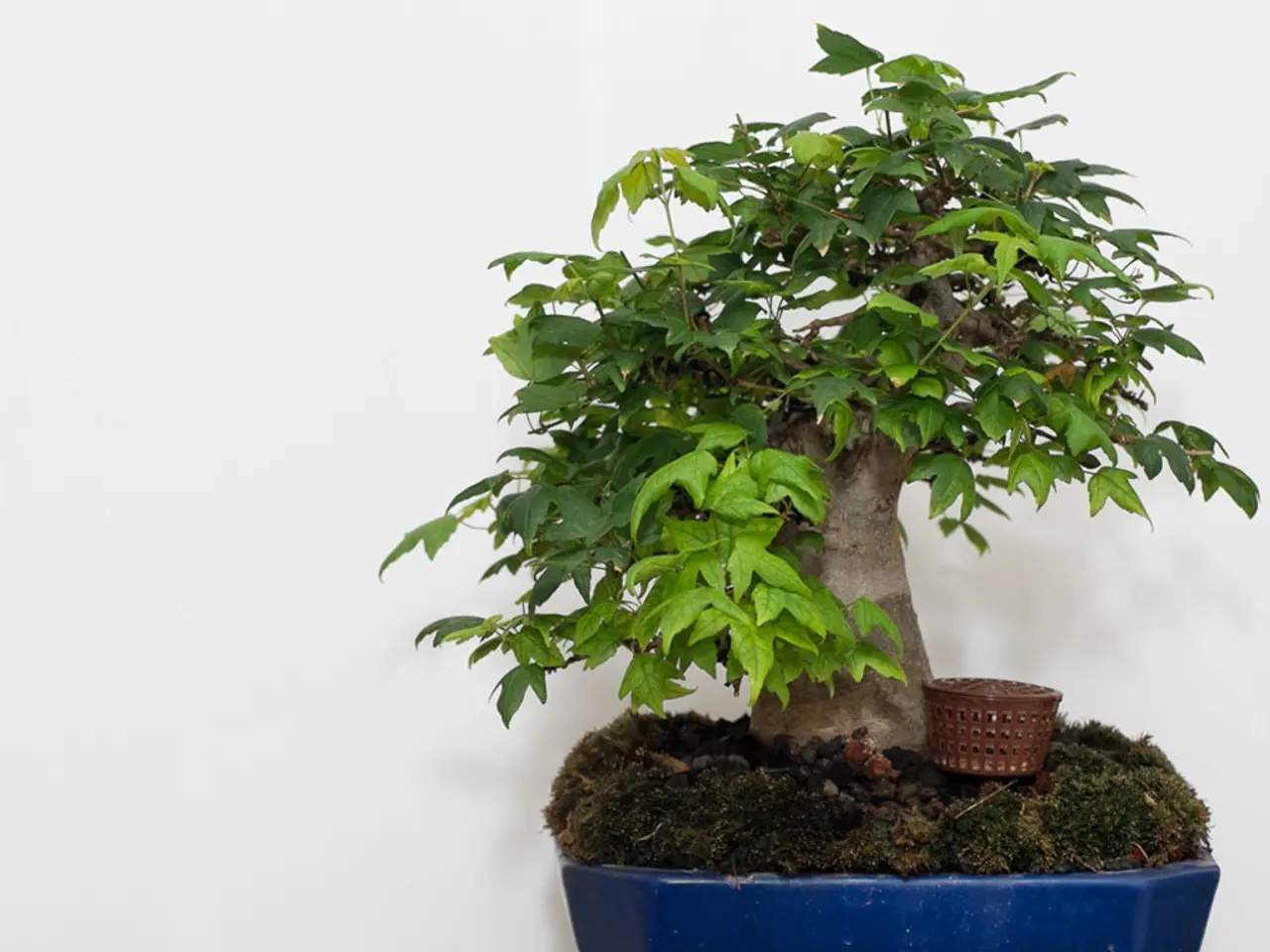Bonsai Nutrient Supply: Customizing for Varied Settings
Fertilizing your indoor bonsai tree is essential for its vibrant growth and overall health. However, the ideal fertilization strategy varies depending on factors such as the bonsai species, temperature, humidity, and soil type.
Factors Affecting Fertilization Needs
Cold temperatures slow down a bonsai's metabolic processes, reducing nutrient demands. This necessitates a reassessment of fertilization schedules to avoid over-fertilization. Temperate species, such as deciduous trees, prefer cooler temperatures, ranging from 40°F to 60°F (4°C to 16°C), which slow down their metabolic rate, reducing fertilization needs. On the other hand, tropical species thrive in warm temperatures, typically between 65°F to 75°F (18°C to 24°C), where they can absorb nutrients efficiently, promoting vitality and healthy growth.
In humid environments, bonsai trees have heightened metabolic activity and increased nutrient demands. During the growing season, bonsai trees should be fertilized fortnightly with a balanced formula to fuel flourishing foliage and robust root growth. In contrast, during cooler seasons, such as autumn and winter, growth slows, and fertilization can be reduced to prevent excessive nutrient buildup.
Adapting to Different Humidity Levels
High Humidity
In high humidity, regular fertilization every 2 to 4 weeks with diluted liquid fertilizer or monthly with slow-release bonsai fertilizer is beneficial. This supports steady nutrient supply without overwhelming the roots, which stay moist longer and can absorb nutrients efficiently.
Low Humidity
Indoor environments with low humidity increase water evaporation from soil and leaves, stressing bonsai roots and limiting nutrient uptake. Here, fertilizing less frequently or with a more diluted fertilizer solution helps avoid salt buildup and root burn. Monitoring soil moisture is crucial before fertilizing—only feed when the soil is moderately moist, never dry or saturated.
General Considerations
- Use bonsai-specific, fast-draining soil mixes (such as mixes containing akadama, pumice, lava rock, or Pine Coir-based gritty mixes) to prevent root rot and optimize nutrient availability.
- Fertilize primarily during the growing season (spring through early fall). Reduce or stop fertilizing during dormant winter months to prevent stressing the tree.
- Avoid overfertilizing as it leads to coarse, unhealthy growth and can damage delicate bonsai roots.
Practical Tips
- Check soil moisture about an inch deep before fertilizing; only fertilize if soil is adequately moist—not dry or overly wet.
- Use slow-release granular fertilizers for ease or diluted liquid fertilizers for more control over nutrient delivery.
- Adapt fertilization schedules to the specific bonsai species, as tropical bonsais grown indoors might tolerate more frequent feeding than temperate species requiring seasonal rest.
In summary, the best strategy is a tailored fertilization regimen using diluted balanced fertilizers or slow-release bonsai fertilizers applied during active growth periods, coupled with careful soil moisture monitoring and choice of soil suited for bonsai to accommodate different indoor humidity conditions effectively. By tailoring your fertilization approach to your specific bonsai and environment, you can ensure a thriving, healthy, and beautiful indoor bonsai tree.
- Adopting a tailored fertilization regimen based on environmental factors such as temperature and humidity is crucial for the lifestyle of home-and-garden enthusiasts who own indoor bonsai trees.
- Environmental-science knowledge is essential for understanding the influence of temperature on bonsai trees' nutrient demands, as cooler temperatures decrease metabolic activity while warmer temperatures increase nutrient uptake.
- Science plays a significant role in the practice of gardening by providing insights into how various factors affect the fertilization needs of bonsai trees, enhancing their vibrant growth and overall health.




